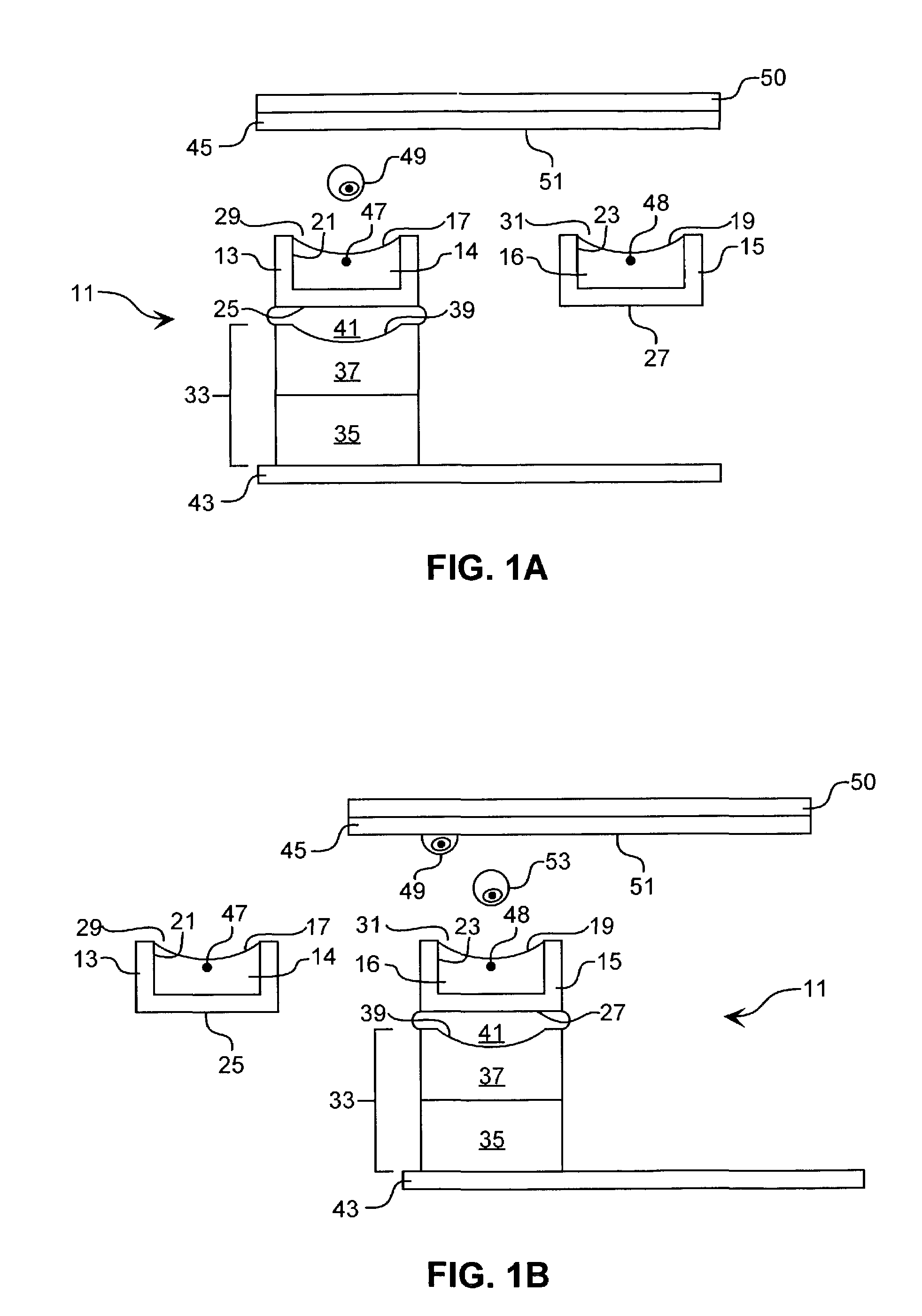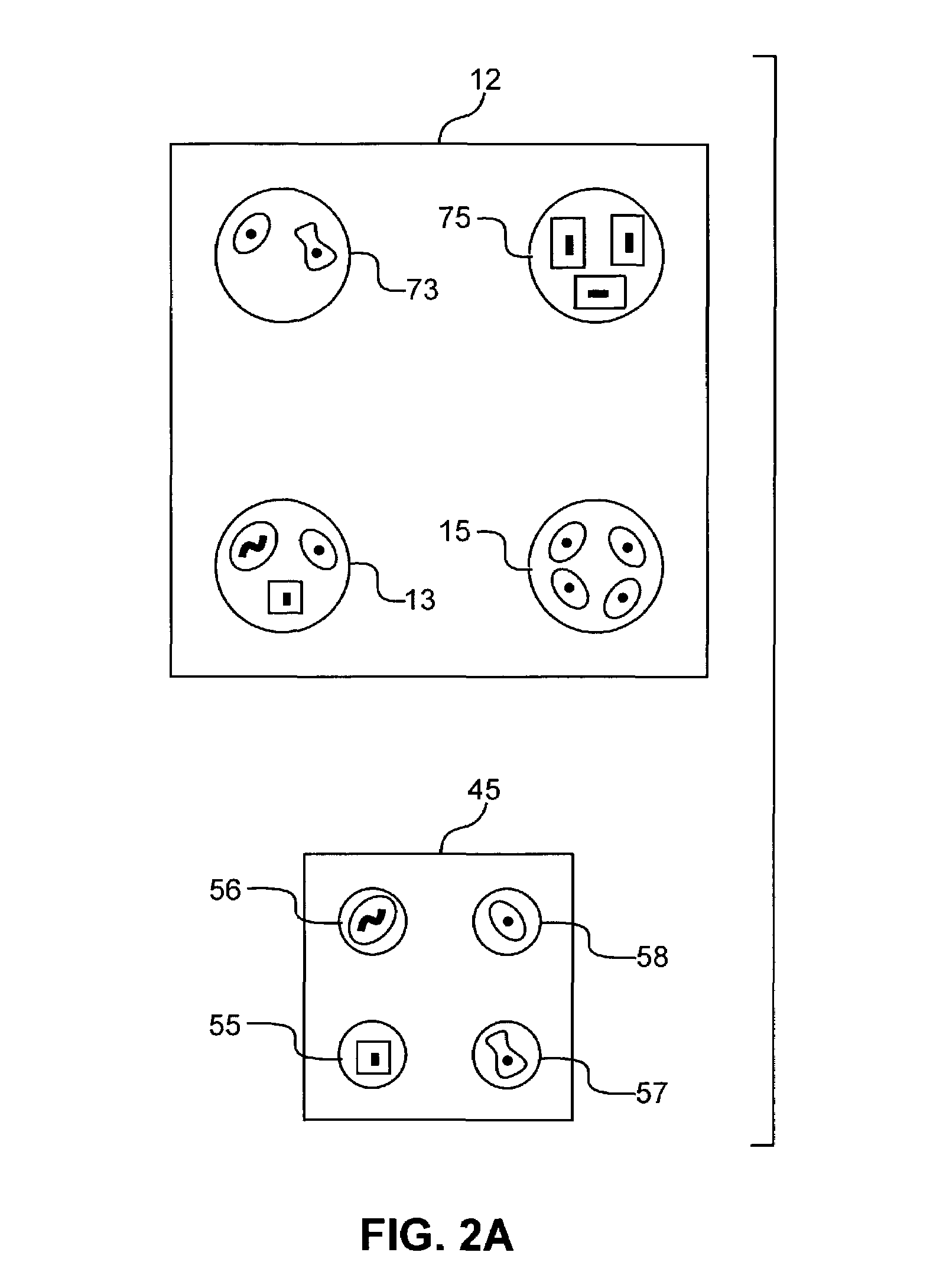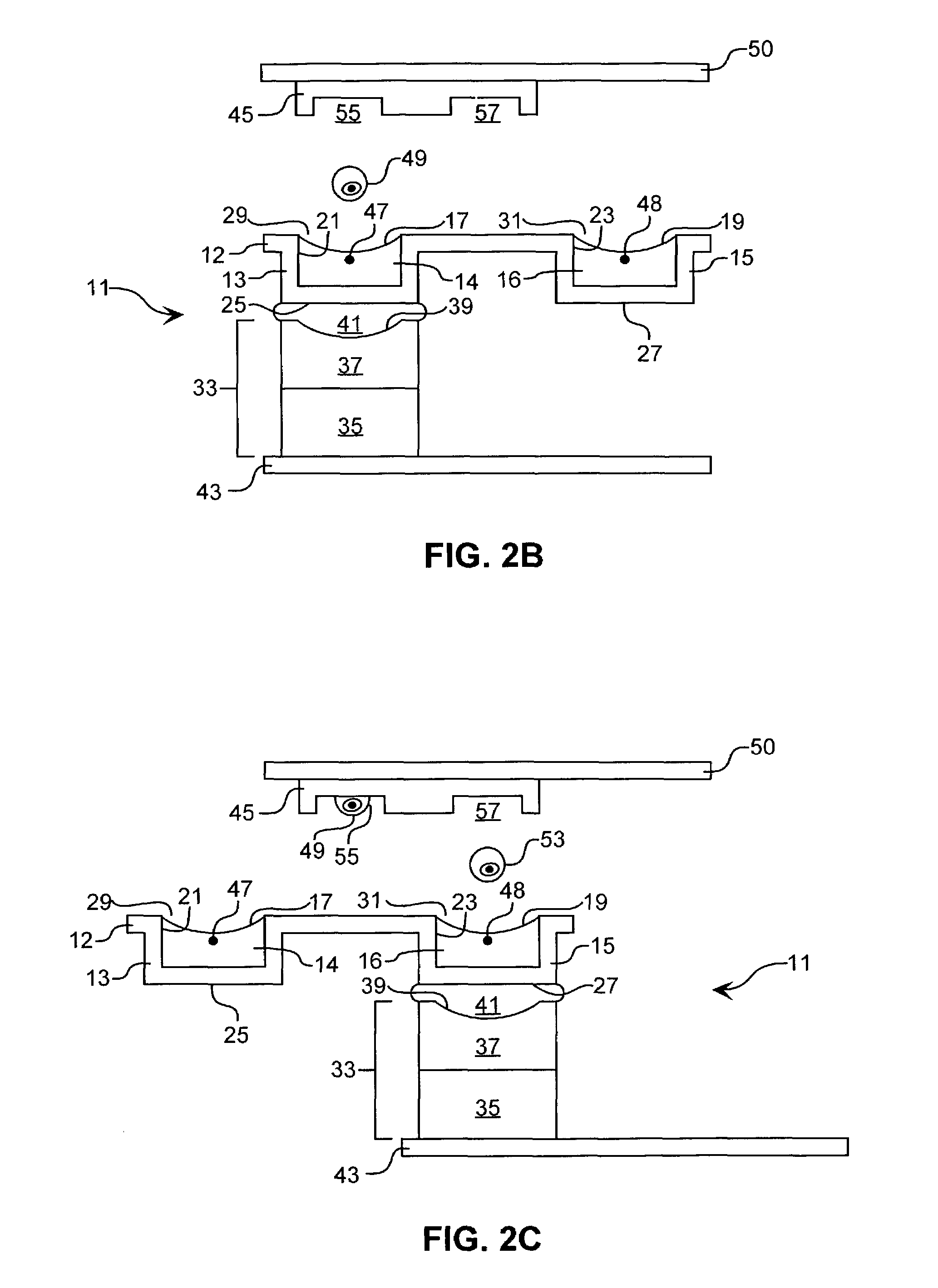Spatially directed ejection of cells from a carrier fluid
a technology of carrier fluid and ejection device, which is applied in the field of ejection of cells from a fluid, can solve the problems of not being able to sort cells into individual array sites by size, requiring costly and detailed microfabrication, and not being able to achieve the current employed methods of manipulating cells, etc., to achieve the effect of forming arrays of single live cells more quickly, flexibly and economically, and reducing the number of cells
- Summary
- Abstract
- Description
- Claims
- Application Information
AI Technical Summary
Benefits of technology
Problems solved by technology
Method used
Image
Examples
example 1
[0081]Acoustic Ejection of Monocytes onto a Substrate to form an Array:
[0082]Rabbit polyclonal-Ab against human MHC (displayed on all cells) is generated and a single clone is selected that binds an MHC epitope common to all humans rather than to the epitopes specific to individuals. A substrate is functionalized with the mAb by routine methods. Monocrystalline Si is chosen as the substrate because of the plethora of known methods for functionalizing Si. A channel 25 μm wide, 25 μm deep, and about 3 cm long, open on top for the last 0.5 cm, is utilized to economize on time spent searching for cells to eject. The channel is fabricated of an HF-etched glass plate heat fused to a cover glass plate by routine microfabrication techniques.
[0083]The channel is fluidically connected by routine methods to a fluid column to which the cell suspension is added. The dimensions of the column allow 5 mL of fluid carrier and cells to be added, so that a sufficient column pressure exists to initiate...
example 2
[0088]Human Airway Epithelium (HAE) Cell Array for Studying Airway Immune and Inflammatory Response:
[0089]The method of the preceding example is adapted to HAE cells by providing a channel having appropriate dimensions (just larger than the HAE cells). Alternatively, the width of the channel is just wider than the cells; to permit faster loading, the depth is approximately three times the diameter of the cells and a ramp, as depicted in FIG. 5D, is employed in the channel flow path just prior to the channel region, which is open. Alternatively, a photon field, as may be provided by a laser commonly used in optical tweezers, may be employed to force the cells close to the surface. HAE cells may be obtained by routine biopsy and cultured. Before being loaded for ejection they must be disaggregated by conventional tissue culture methods and then suspended as individual cells.
[0090]The experiments may be conducted under conditions that permit cell division. The need for the preceding as...
example 3
[0091]HAE Cell Array for Studying Individual Susceptibility to Mutagenesis as a Proxy for Carcinogenesis:
[0092]The method of the preceding example is adapted to permit exposing the arrayed HAE cells to chemical and other mutagens, such as heat and radiation. Genetic damage is measured at different times after the exposure is discontinued by routine methods, for example biochemical assaying of broken crosslinks and other damage to DNA. Differences in DNA repair enzyme genetics may be studied by comparing recovery (extent of reduction of damage) at various times after exposure. The well plate arrays remain useful as controls, and cells may be cultured in the well plates, or array cells may be removed and cultured, to determine whether there is actual appearance of dysplastic or neoplastic cells in subsequent cell generations after the exposure.
PUM
| Property | Measurement | Unit |
|---|---|---|
| diameters | aaaaa | aaaaa |
| diameters | aaaaa | aaaaa |
| thick | aaaaa | aaaaa |
Abstract
Description
Claims
Application Information
 Login to View More
Login to View More - R&D
- Intellectual Property
- Life Sciences
- Materials
- Tech Scout
- Unparalleled Data Quality
- Higher Quality Content
- 60% Fewer Hallucinations
Browse by: Latest US Patents, China's latest patents, Technical Efficacy Thesaurus, Application Domain, Technology Topic, Popular Technical Reports.
© 2025 PatSnap. All rights reserved.Legal|Privacy policy|Modern Slavery Act Transparency Statement|Sitemap|About US| Contact US: help@patsnap.com



